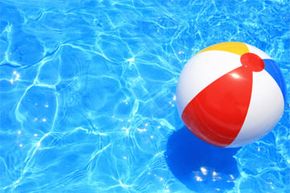OK everyone, time to go to the pool. Here's our checklist: towels, water slippers, sunglasses, suntan lotion and prevention of RWIs. Huh, what's an RWI? Well, unfortunately, the term RWI has become more common. It stands for recreational water illness, and some RWIs can be downright dangerous.
Even though millions of people swim safely in public areas each year, it's important to know that certain infectious diseases can occur while swimming in public pools, water parks, lakes, decorative water fountains in the city and yes, even the ocean.
Advertisement
C'mon Doc, It's a Big Pool
To be blunt, public water facilities are like giant bathtubs. You're essentially bathing with everyone in the pool. While this may be a neat way to meet people, it's important to practice good pool hygiene to prevent or decrease the chance of either spreading or getting an infection.
While most potential infections involve the gastrointestinal tract and diarrhea (remember the severe illness related to fecal contamination in a water park in Georgia?), infections of the eyes, ears, respiratory system and skin can also occur.
What About Chlorine?
Chlorine does a "good job of killing most germs," but it doesn't make the water germ-free, says the Centers for Disease Control (CDC). The agency says that "a few germs can survive normal pool, hot tub, and spa levels of chlorine for several hours to days," and that chlorine levels must be properly maintained to kill most germs.
In fact, warm-water temperatures may cause chlorine to evaporate faster, making germ fighting ineffective. Also, there's a good reason behind pool signs that ask you to shower before you enter the pool. (I know you must be thinking: "What difference does it make? I'm going to get wet anyway?") The main reason is because sweat contains nitrogen and ammonia, which can react with chlorine and reduce its effectiveness. In fact, urine, hair spray and suntan oil can all have the same effect. When this occurs, a chlorine smell may develop, indicating that all is not is not well at the pool.
Advertisement

